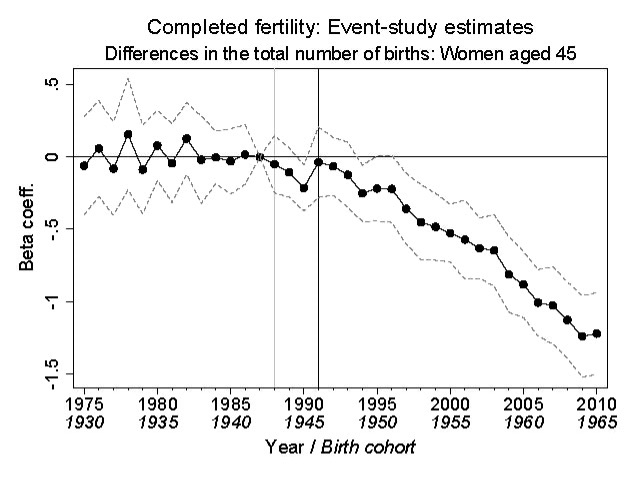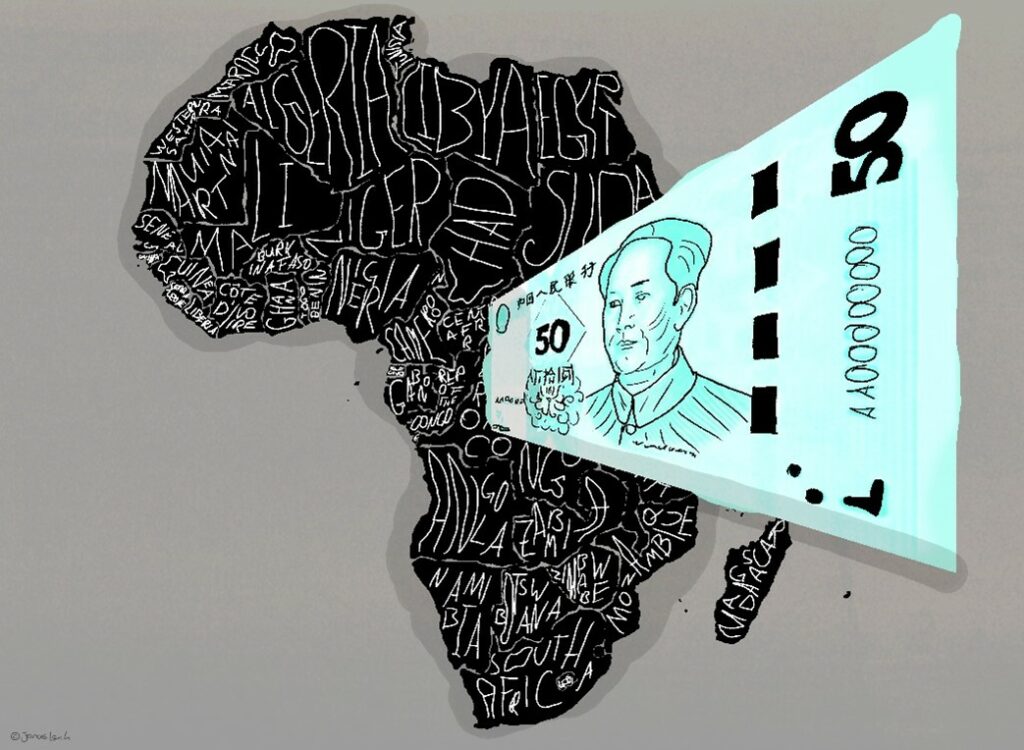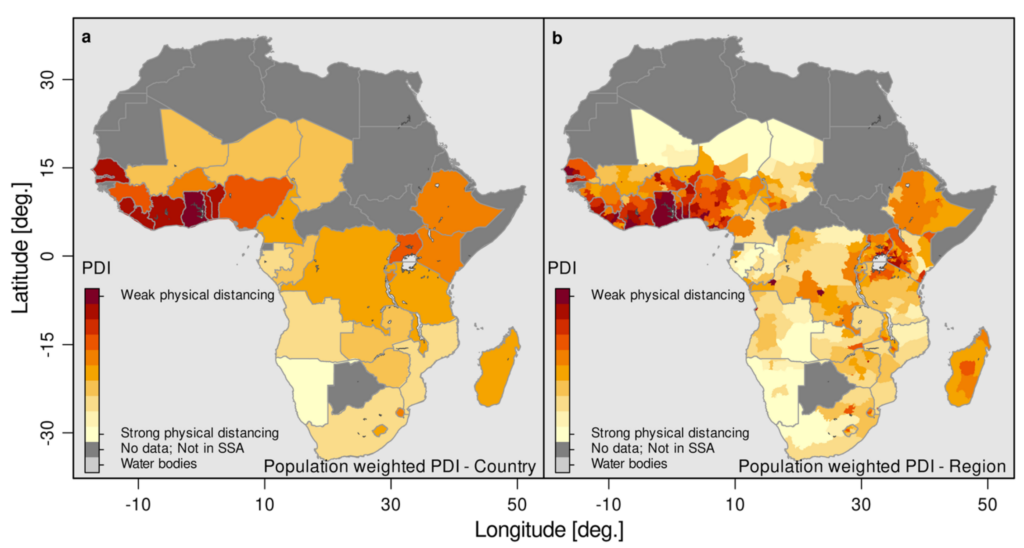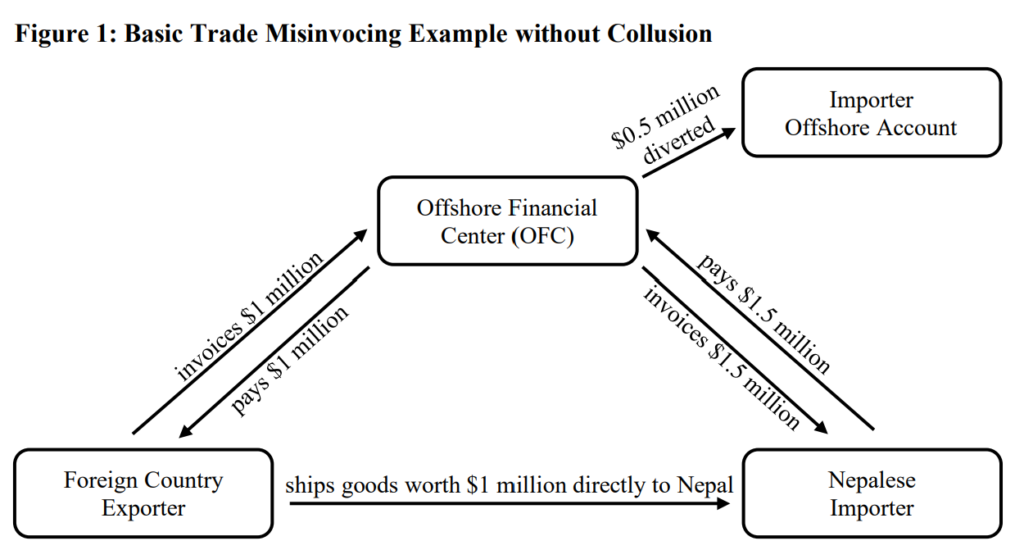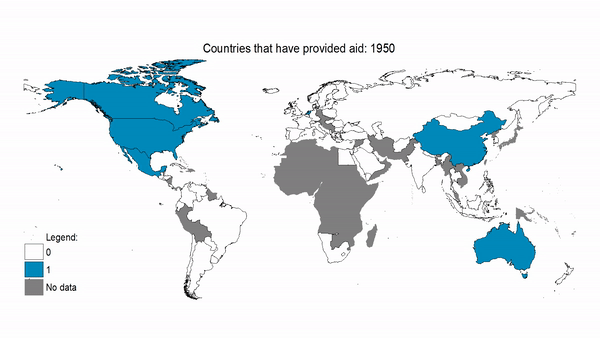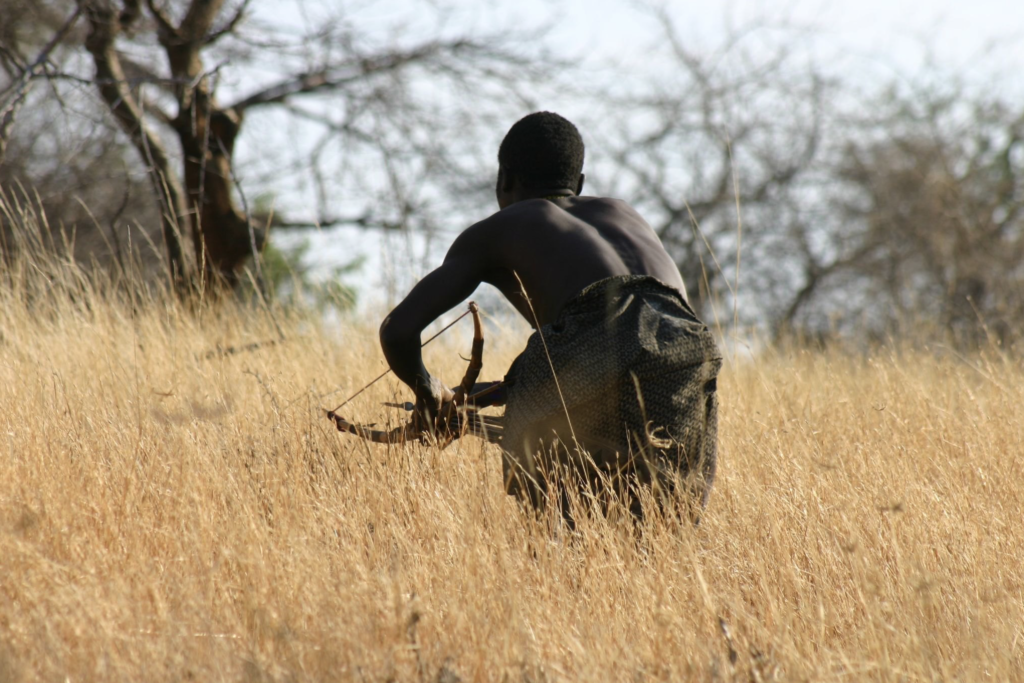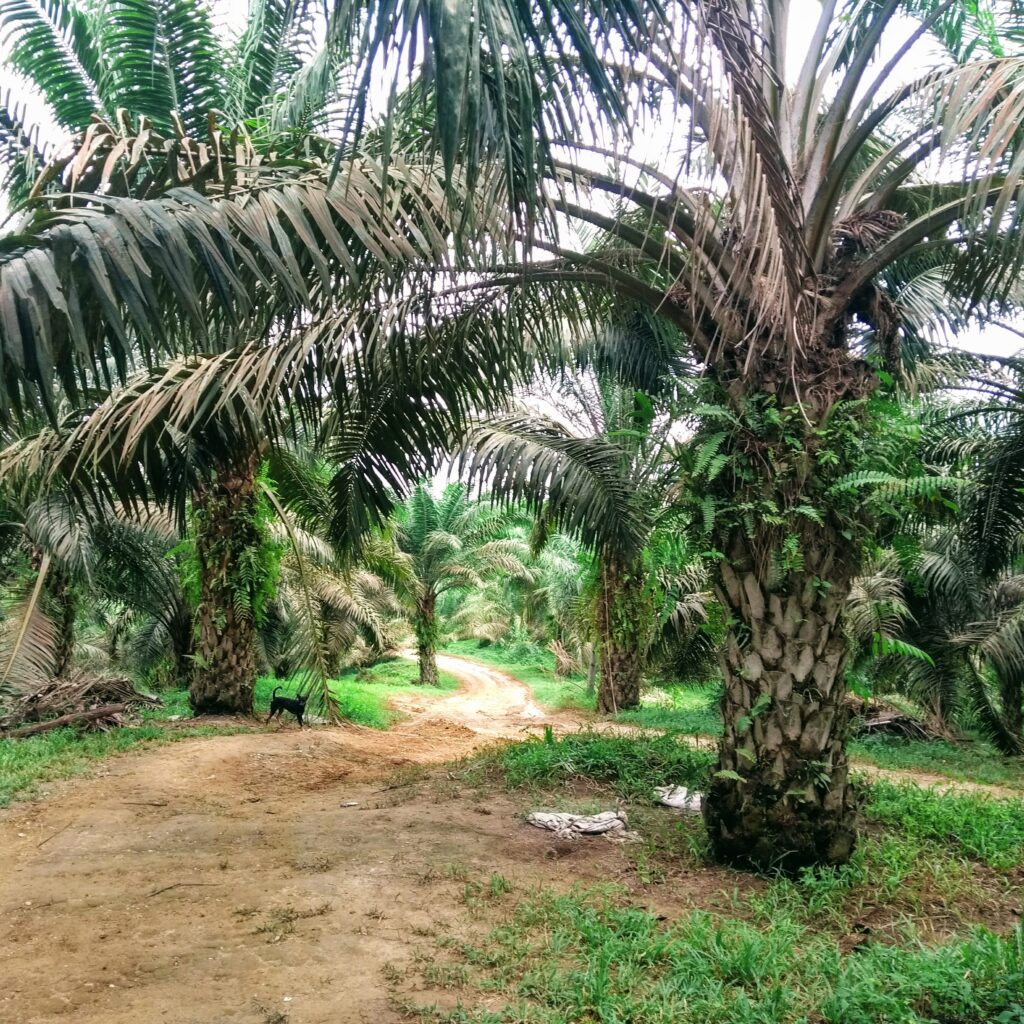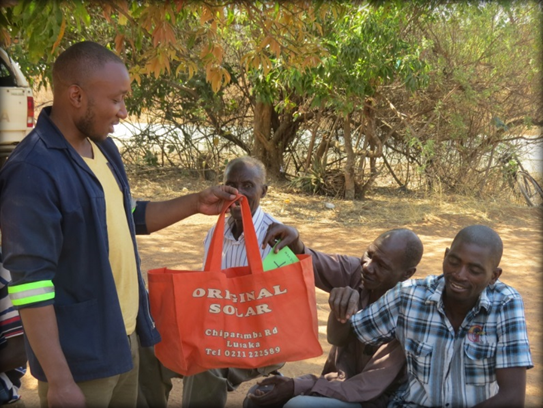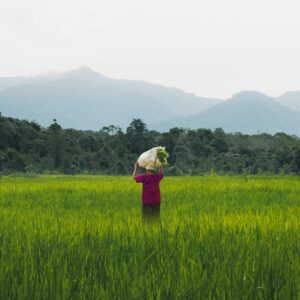A long-standing theoretical claim is that children serve as their parents' retirement assets in the absence of formal social security systems. But how can this hypothesis be tested empirically? The paper studies the context by examining the introduction of a comprehensive and financially lucrative pension system in Brazil. While employees in metropolitan areas have been paying into a state pension system for several decades, employees and self-employed people in rural areas of Brazil only gained access to a state pension scheme with the constitutional reform of 1991. The research shows that women who were able to qualify for the state pension system at a young age actually had fewer children. Compared to the control group (women in urban settlement areas for whom no change was made in pension provision), the women affected by the introduction of the pension system had on average 1.3 fewer children at the age of 45, and thus fewer than 4 children per woman. This accelerated the decline in birth rates in rural Brazil that had already been occurring for many decades. The pension reform thus exacerbated the demographic undermining of the pay-as-you-go pension system in Brazil.
Liebenehm, Sabine, Ingmar Schumacher, and Eric Strobl. 2023. Rainfall Shocks and Risk Aversion: Evidence from Southeast Asia. American Journal of Agricultural Economics. https://doi.org/10.1111/ajae.12403
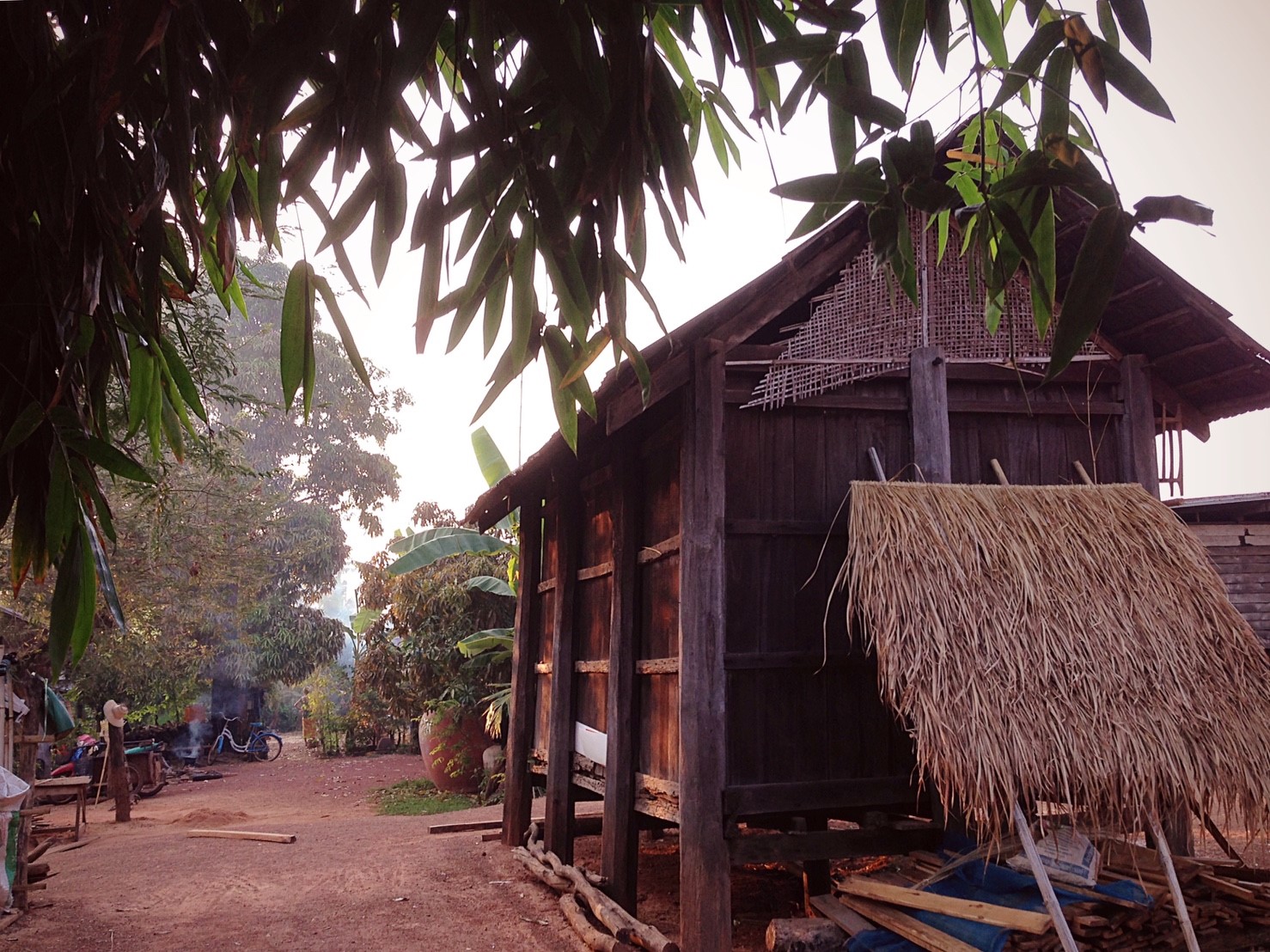
Empirical evidence on the temporal stability of risk aversion and the role of exogenous shocks is inconclusive. In this paper we revisit this problem and analyze whether and to what extent risk aversion changes in response to rainfall shocks in an agrarian setting, and the role of changes in yields and output prices as two potential channels. We study this both in a simple theoretical model and in an extensive empirical study. The theoretical model predicts that under prudence, households that are either a net seller, a net buyer, or autarkic, increase risk aversion. To test the model predictions, we use a panel data set of the same 1,005 respondents from Northeastern Thailand and Central Vietnam (TVSEP) interviewed across five survey waves between 2008 and 2017 and combine it with historical rainfall data at the village level to capture negative rainfall shocks. Our empirical strategy exploits exogenous variation in the timing, location, and magnitude of rainfall shortages to identify their effect on risk aversion. We find that rainfall shortages increase respondents’ risk aversion, a finding remarkably stable across alternative specifications. The magnitude of the main effect of rainfall shortages on risk aversion is largest among net buyers, and approximately half the size among net sellers. Autarkic households do not exhibit a significant effect. Although rainfall shortages lead to significant reductions in agricultural yields and significant increases in commodity prices, the mediation analysis suggests that these market mechanisms do not play a significant role, except for a small statistically significant mediating effect of prices among the net buying household group. The finding that rainfall shortages lead to significant increases in risk aversion, especially among households that depend on local markets to buy food, has potentially important implications for food security and poverty dynamics. An increased level of risk aversion can undermine investments, e.g., in a beneficial technology, induce forgone returns, and increase the likelihood to fall or being pushed further below the poverty line.
Braczkowski, A.R., O’Bryan, C.J., Lessmann, C. et al. The unequal burden of human-wildlife conflict. Commun Biol 6, 182 (2023). https://doi.org/10.1038/s42003-023-04493-y
Human-wildlife conflict is one of the most pressing sustainable development challenges globally. This is particularly the case where ecologically and economically important wildlife impact the livelihoods of humans. Large carnivores are one such group and their co-occurrence with low-income rural communities often results in real or perceived livestock losses that place increased costs on already impoverished households. Here we show the disparities associated with the vulnerability to conflict arising from large carnivores on cattle (Bos taurus) globally. Across the distribution of 18 large carnivores, we find that the economic vulnerability to predation losses (as measured by impacts to annual per capita income) is between two and eight times higher for households in transitioning and developing economies when compared to developed ones. This potential burden is exacerbated further in developing economies because cattle keepers in these areas produce on average 31% less cattle meat per animal than in developed economies. In the lowest-income areas, our estimates suggest that the loss of a single cow or bull equates to nearly a year and a half of lost calories consumed by a child. Finally, our results show that 82% of carnivore range falls outside protected areas, and five threatened carnivores have over one third of their range located in the most economically sensitive conflict areas. This unequal burden of human-carnivore conflict sheds light on the importance of grappling with multiple and conflicting sustainable development goals: protecting life on land and eliminating poverty and hunger.
Hoeffler, Anke; Sterck, Olivier, 2022. Is Chinese aid different?. In: World Development. Elsevier. 156, 105908. ISSN 0305-750X. eISSN 1873-5991. Available under: doi:10.1016/j.worlddev.2022.105908.
China is commonly depicted as a "rogue" donor, using aid to further its own interests abroad and secure access to natural resources. Especially China’s involvement in African countries has been criticized for being guided by self-interest rather than recipient need or merit. For the period 2000-2012, we compare China’s aid allocation behaviour to that of the five largest donor countries globally: France, Germany, Japan, the UK, and the USA. We use regression analysis and a rigorous variance decomposition method to measure the importance of various factors in predicting aid commitments. We find that donors differ markedly in how they allocate aid. While Germany, Japan, the USA, and the UK assign high importance to recipient need, France’s and China’s allocation models are, for a large part, driven by variables that relate to self-interest: trade in the case of France, and the adherence to the "One-China policy" in the case of China. However, China is not a purely selfish donor. As most Western donors, China commits more aid to poorer countries. Furthermore, we find no evidence that commercial interests, such as trade or access to natural resources, determine Chinese aid allocation. This latter result contrasts with Western donors, which allocate more aid to their trade partners. France and the UK also commit significantly more aid to their former colonies. In conclusion, the claim that China’s aid allocation is different must be qualified.
The study made use of a dataset published by Axel Dreher and Andreas Fuchs - also members of the Research Group on Development Economics - together with Brad Parks, Austin M. Strange and Michael J. Tierney in the article "Apples and Dragon Fruits: The Determinants of Aid and Other Forms of State Financing from China to Africa".
Günther, Isabel, Harttgen, Kenneth, Seiler, Johannes and Utzinger, Jürg. An index of access to essential infrastructure to identify where physical distancing is impossible. Nature Communications 13, 3355 (2022). https://doi.org/10.1038/s41467-022-30812-8.
To identify areas at highest risk of infectious disease transmission in Africa, we develop a physical distancing index (PDI) based on the share of households without access to private toilets, water, space, transportation, and communication technology and weight it with population density. Our results highlight that in addition to improving health systems, countries across Africa, especially in the western part of Africa, need to address the lack of essential domestic infrastructure. Missing infrastructure prevents societies from limiting the spread of communicable diseases by undermining the effectiveness of governmental regulations on physical distancing. We also provide high-resolution risk maps that show which regions are most limited in protecting themselves. We find considerable spatial heterogeneity of the PDI within countries and show that it is highly correlated with detected COVID-19 cases. Governments could pay specific attention to these areas to target limited resources more precisely to prevent disease transmission.
Implementation Research on OPD services in the Social Health Protection Initiative, Khyber Pakhtunkhwa (KP) province and the Gilgit Baltistan (GB) area in Pakistan
Since 2015, the Social Health Protection Initiative (SHPI) aims at increasing access of the poor to health services in Khyber Pakhtunkhwa (KP) and Gilgit Baltistan (GB) in Pakistan. The KfW-financed project removes financial barriers by providing a subsidized health insurance. Phase 1 extended insurance for the poorest 21% of the population covering inpatient services in selected public and private hospitals. Phase 2 is now extending coverage to include outpatient services (OPD). KfW selected the research consortium consisting of Friedrich-Alexander University Erlangen-Nürnberg, Heidelberg Institute of Global Health, and Khyber Medical University, to provide evidence in support of the implementation. The research component covers 1) preparatory studies in support of the design of the scheme, 2) implementation research throughout the project cycle, 3) outcome and impact evaluation, and 4) additional research on out-of-pocket (OOP) expenditures for inpatient care services (IPD) under Phase 1.
Source of funding: KfW
Project period: August 2021 – August 2023 (initially)
Beteiligte Forscherinnen und Forscher (Principal Investigators): Andreas Landmann (Friedrich-Alexander-Universität Erlangen-Nürnberg), Zohaib Khan (Khyber Medical University), Manuela De Allegri (Heidelberg Institute of Global Health, Medizinische Fakultät der Universität Heidelberg)
Steinkamp, Sven and Frank Westermann, „Development aid and illicit capital flight: Evidence from Nepal“, The World Economy, September 2021, DOI: 10.1111/twec.13208.
While illicit capital flight is a major concern of policymakers in developing countries, there is only little research on the possible link between capital flight and development aid. In this paper, we address the issue for Nepal, a stereotypical financially closed developing economy that is highly dependent on resources from abroad. Distinguishing features of our approach are the use of a narrowly defined proxy of capital flight, based on trade cost-adjusted mirror trade statistics, and the focus on the foreign-exchange cash component of development aid. We document a robust partial correlation between aid and outward capital flight that is economically and statistically significant. Interestingly, this positive correlation is not observable for remittances, an alternative form of foreign-exchange inflows where the capital flight motivation is absent. Furthermore, it is visible in the FX cash component but not in broader aid definitions that include in-kind transfers, or in multilateral and IMF loans. Finally, when comparing the subcomponents of export underinvoicing and import overinvoicing, only the latter is driving our results.
Budjan, Angelika J., and Andreas Fuchs (2021). Democracy and Aid Donorship. American Economic Journal: Economic Policy, Volume 13, Issue 4, Pages: 217–38.
Almost half of the world's states provide bilateral development assistance. While previous research takes the set of donor countries as exogenous, this article introduces a new dataset on aid giving that covers all countries in the world, both rich and poor, and explores the determinants of aid donorship. It argues and shows empirically that democratic institutions support the setup of an aid program in richer countries but undermine its establishment in poorer countries. The findings hold in instrumental-variable regressions and the pattern is similar for the amount of aid.
Toman Barsbai, Dieter Lukas and Andreas Pondorfer. Local Convergence of Behavior across Species. Science (2021)
We find that foraging humans forage, reproduce, share parenting, and even organise their social groups in similar ways as surrounding mammal and bird species, depending on where they live in the world. Our results imply that local environments exert a key influence on how foraging human populations and non-human species behave, despite their very different backgrounds. Local environmental conditions select for similar foraging, social, and reproductive behaviors across human foragers and non-human animals, driving behavioral diversity worldwide.
Axel Dreher, Andreas Fuchs, Bradley Parks, Austin Strange, and Michael J. Tierney (2021). Aid, China, and Growth: Evidence from a New Global Development Finance Dataset. American Economic Journal: Economic Policy, Volume 13, Issue 2, Pages: 1–40.
China has become a major source of global development finance, but the nature and consequences of its official financing activities are poorly understood. The absence of systematic evidence and rigorous analysis on the economic growth effects of Chinese development finance represents a major blind spot in the literature. This article introduces a new dataset of official financing from China to 138 developing countries between 2000 and 2014. This allows us then to investigate whether Chinese development finance affects economic growth in recipient countries. The results demonstrate that Chinese development finance boosts short-term economic growth. An additional project increases growth by between 0.41 and 1.49 percentage points two years after commitment, on average. These effects persist across different aid sectors and appear to be driven by increases in investment and - to a lesser extent - consumption. While this study does not find that significant financial support from China impairs the overall effectiveness of aid from Western donors, aid from the United States tends to be more effective in countries that receive no substantial support from China. Overall, this evidence should allay some of the fears that policymakers have expressed about China acting as “rogue donor” that undermines the effectiveness of Western assistance.
Elías Cisneros, Krisztina Kis-Katos and Nuryartono, Nunung (2021): Palm oil and the politics of deforestation in Indonesia, Journal of Environmental Economics and Management, https://doi.org/10.1016/j.jeem.2021.102453
This paper studies the interactions between political and economic incentives to foster forest conversion in Indonesian districts. Using a district-level panel data set from 2001 to 2016, we analyze variation in remotely sensed forest losses as well as measures of land-use licensing. We link these outcomes to political incentives arising before idiosyncratically-timed local mayoral elections as well as to price exposure measures based on oil palm soil suitability combined with global price variations for palm oil. Empirical results document increases of about 4% in deforestation in the year prior to local mayoral elections on average. Additionally, palm oil plays a crucial role in driving deforestation dynamics. Deforestation rates increase by 7% in places that experience a one standard deviation increase in local price exposure, but no upcoming elections. These effects are amplified to almost 19% larger forest losses in places that experience pre-election years and a standard deviation higher palm oil price exposure at the same time. We thus find clear evidence for economic and political incentives reinforcing each other as drivers of forest loss and land conversion for oil palm cultivation.
Menusch Khadjavi, Kacana Sipangule Khadjavi, and Rainer Thiele (2021). Social Capital and Large-Scale Agricultural Investments: An Experimental Investigation. The Economic Journal, Volume 131, Issue 633, Pages 420–449
Following the 2007–2008 global food crisis, agricultural producers have invested in large tracts of land in developing countries. We investigate how the arrival of large-scale farms changes inter-personal trust and reciprocity, important components of social capital, in traditional Zambian villages. Using experimental methods, we elicit trust and reciprocal behaviour in villages that lie near large-scale farms and compare them with control villages at a distance. Our data reveal greater trust in villages close to large-scale farms, which is in line with communal coping as a response to the arrival of the large farms. Reciprocity is more frequent after farm employment, which points to reputation building.
Danzer, Alexander M., Robert Grundke (2020). „Export price shocks and rural labor markets: The role of labor market distortions.” Journal of Development Economics, 2020, Volume 145, 102464

© Robert Grundke
Can workers in developing countries take advantage of trade? Alexander M. Danzer (KU Eichstätt-Ingolstadt) and Robert Grundke (OECD) answer this question by using fluctuations in the world market price for cotton and identifying the effects of higher export prices on the wages of poor agricultural workers in the cotton harvest, using the example of Tajikistan. The increased demand for workers during the high price episode doubles wages for cotton pickers on small private farms, but has no impact on wages on large parastatal farms. The different treatment of workers is due to market power and the continued use of coerced labor in large companies during the cotton harvest, not least of school children and university students. The research concludes that trade produces winners and losers based on the political power relations between local decision makers and managers of parastatal farms.
Heß, Simon, Dany Jaimovich, and Matthias Schündeln. "Development projects and economic networks: Lessons from rural Gambia." The Review of Economic Studies (2021)
The authors study the effect of participatory development projects on social and economic networks in rural villages in The Gambia. Participatory development projects actively involve villagers in financing and decision-making processes, intending to create more effective projects and to strengthen local institutions. These projects, in particular Community-Driven Development (CDD) projects, are a major form of international donor activity. As of March 2021, the World Bank alone supports 327 CDD projects in 90 countries, lending over 33 billion US$. Thus, it is important to understand the effects of such projects on local communities. Existing research on the intended effects of CDD projects is limited in breadth and typically finds moderate positive effects at best. At the same time, CDD projects risk having unintended negative effects, e.g. through their interactions with local power structures and decision-making mechanisms, or through unequally distributed benefits.
The authors first argue theoretically that the effects of CDD projects on decision-making processes and unequal economic outcomes can translate into effects on social and economic networks. To study the effect of CDD projects on networks empirically, the authors utilize the random allocation of a CDD project to villages in The Gambia. They collected detailed data on social and economic interactions in 56 villages, half of which had received CDD projects in the past. The central empirical finding is that the density of social and economic networks in program villages is lower than in non-program villages. Given the importance of these informal networks for risk-sharing (e.g., in case of an illness), the reduced density of networks implies a negative effect on expected household welfare. Further empirical analyses suggest that elite capture (i.e., the appropriation of project gains by village elites) contributed to the problem of unequally distributed benefits from the project, which in turn led to conflicts, thus weakening the networks. Overall, the results demonstrate possible unintended negative consequences of participatory development projects.
“Is There a Rainbow after the Rain? How Do Agricultural Shocks Affect Non‐Farm Enterprises? Evidence from Thailand” (Katharina Grabrucker and Michael Grimm, both from the University of Passau), published in the American Journal of Agricultural Economics
The authors merged detailed household panel data from the TVSEP with grid‐level precipitation data to study the indirect effects of rainfall shocks on non‐farm enterprises in rural Thailand. They focus on both forward and backward linkages along the value chain as well as direct demand effects through farmer’s consumption. Overall, their analysis shows that the costs of agricultural shocks are higher than what much of the literature has suggested so far. Despite limited market integration in poor rural economies, the spill-overs are sizable and are transmitted through various channels. One implication is that safety nets targeted at farms may need to consider non‐farm enterprises too.

